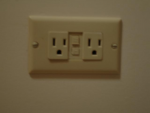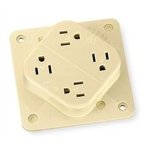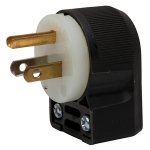junkhound
Senior Member
- Location
- Renton, WA
- Occupation
- EE, power electronics specialty
Common reason for ground pinup is to avoid possible short from falling debris.
Last week was routing out some fins off a heat sink for custom power supply job. Plugged into horizontal plug mold outlet strip.
Safety glassed, etc, little aluminum chips flying about.
About finished, and 'FLASH/SNap". One chip managed to find the way into the tiny gap between plug and outlet.
Ground pin on plugmold to the right
So, add to that old discussion, always install horizontal 120V outlets with ground lug to the LEFT.
Last week was routing out some fins off a heat sink for custom power supply job. Plugged into horizontal plug mold outlet strip.
Safety glassed, etc, little aluminum chips flying about.
About finished, and 'FLASH/SNap". One chip managed to find the way into the tiny gap between plug and outlet.
Ground pin on plugmold to the right
So, add to that old discussion, always install horizontal 120V outlets with ground lug to the LEFT.






